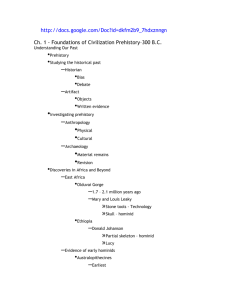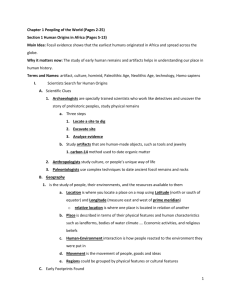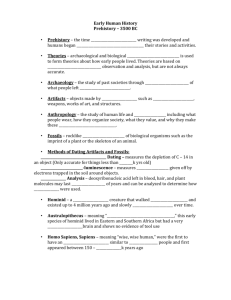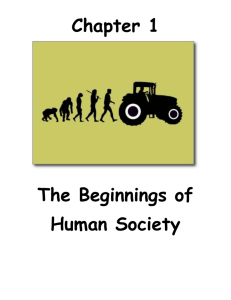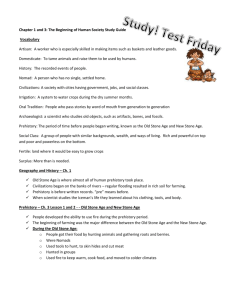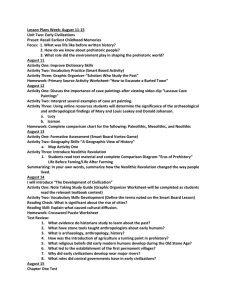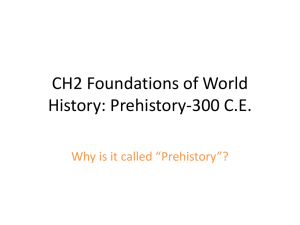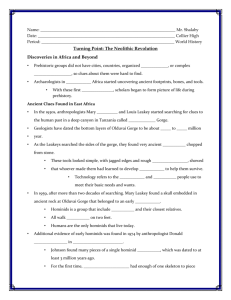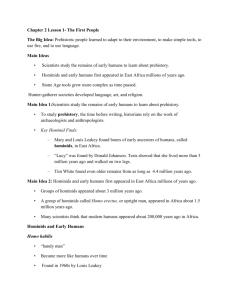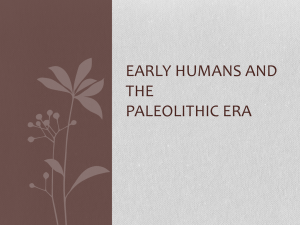File
advertisement
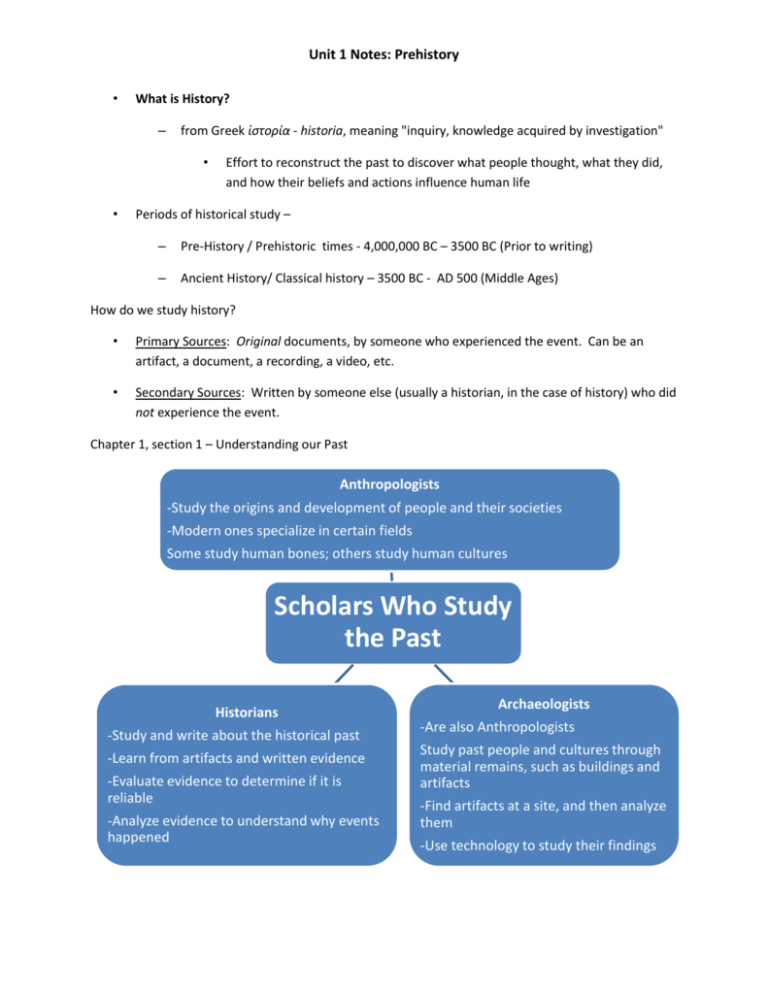
Unit 1 Notes: Prehistory • What is History? – from Greek ἱστορία - historia, meaning "inquiry, knowledge acquired by investigation" • • Effort to reconstruct the past to discover what people thought, what they did, and how their beliefs and actions influence human life Periods of historical study – – Pre-History / Prehistoric times - 4,000,000 BC – 3500 BC (Prior to writing) – Ancient History/ Classical history – 3500 BC - AD 500 (Middle Ages) How do we study history? • Primary Sources: Original documents, by someone who experienced the event. Can be an artifact, a document, a recording, a video, etc. • Secondary Sources: Written by someone else (usually a historian, in the case of history) who did not experience the event. Chapter 1, section 1 – Understanding our Past Anthropologists -Study the origins and development of people and their societies -Modern ones specialize in certain fields Some study human bones; others study human cultures Scholars Who Study the Past Historians -Study and write about the historical past -Learn from artifacts and written evidence -Evaluate evidence to determine if it is reliable -Analyze evidence to understand why events happened Archaeologists -Are also Anthropologists Study past people and cultures through material remains, such as buildings and artifacts -Find artifacts at a site, and then analyze them -Use technology to study their findings Unit 1 Notes: Prehistory HOMINIDS GROUP Australopithecines Homo Habilis SUMMARY • • • Earliest hominids Lived in Africa Appeared as early as 7 million years ago • • Emerged about 2 million years ago Made stone tools for cutting, scraping, chopping, or sawing plants, animals and wood • • Appeared around 2 million years ago, walked upright Had larger brains and bones and smaller teeth than other hominids Thought to be first to use fire and to migrate out of Africa Made hand axes Homo Erectus • • • • Homo Sapiens • • Emerged between 100,000 and 250,000 years ago May have lived in Africa, then migrated into rest of world, or may have developed from Homo erectus in different parts of the world Divided into two groups: Neanderthals and early modern humans Between 50,000 and 30,000 years ago Neanderthals disappeared; early modern humans are now the only hominids on Earth Chapter 1, section 2: Turning Point – the Neolithic Revolution Life before farming • Old Stone Age/Paleolithic • Nomads; hunted and gathered food • Lived in bands of 20 to 30 • Made simple tools out of stone, bone, and wood • Built fires and made clothing • Developed spoken language • Learned to cross water • Showed belief in a spiritual world, buried their dead, and made cave paintings Life After framing • New Stone Age/Neolithic • Grew own food, no longer nomads • Farmers settled in the first permanent villages, including Çatalhüyük and Jericho. • Developed new skills and technologies, including plant and animal domestication, and calendars. • Men began to dominate family, economic, and political life. • Differences in wealth appeared. Unit 1 Notes: Prehistory Notes: Old Vs. New Stone Age Paleolithic (old stone age) 2.5 mya - Begins with the use of stone tools Neolithic (New Stone Age) 10,000 years ago - 3,500 BCE During the Neolithic era fundamental changes in society took place because of the new tools in use. - Life based on agriculture, domesticated animals and permanent settlements Evolution of towns & cities • Farming produces a surplus (“extra” food) • Population Growth – more food = healthier population = population boom – W/ more people --> Greater reliance on farming to sustain the population • Domesticate animals & develop new farming tools = more food – W/ a surplus food can be bartered (traded) = cultural/ technological exchange • Division on labor – specialization – Farmers, craftsmen, artisans (things get made better & faster) – More time & More people = public building projects requires leadership to organize & collect taxes to pay for it. • Wealthier, more comfortable & complex life style develop…. Civilization Chapter 1, Section 3: The Beginnings of Civilization Rise of Cities and Civilizations Features of Civilizations • Located near major • Cities rivers • Organized • River valley governments civilizations arose in • Complex religions the Middle East, Egypt, • Job specialization India, and China. • Social classes • In the Americas, early • Arts and architecture civilizations arose in • Public Works the highlands; they • Writing may have begun as religious centers. • Away from the cities, Changes Over Time • Changes in the physical environment caused civilizations to change. • Interactions among people and cultural diffusion caused civilizations to change. • As rulers grew more powerful, civilizations began to center around city-states and Unit 1 Notes: Prehistory people lived as hunters, gatherers, famers, and nomads. empires. Notes: Why River Valleys - 1. Regular water supply - 2. Transportation - 3. Animals go to water = food supply - 4. Good for farming (floods spread silt, creating fertile soil) 5. b/c of farming condition farmers can produce a surplus of food and support a growing population Unit 1 Notes: Prehistory
